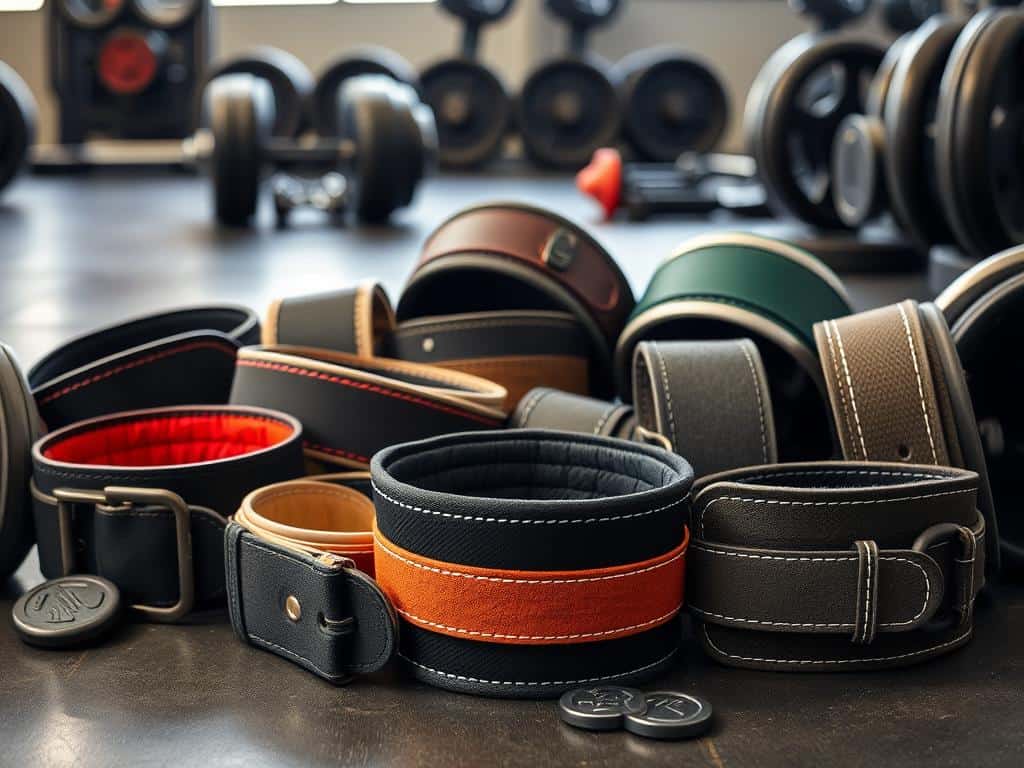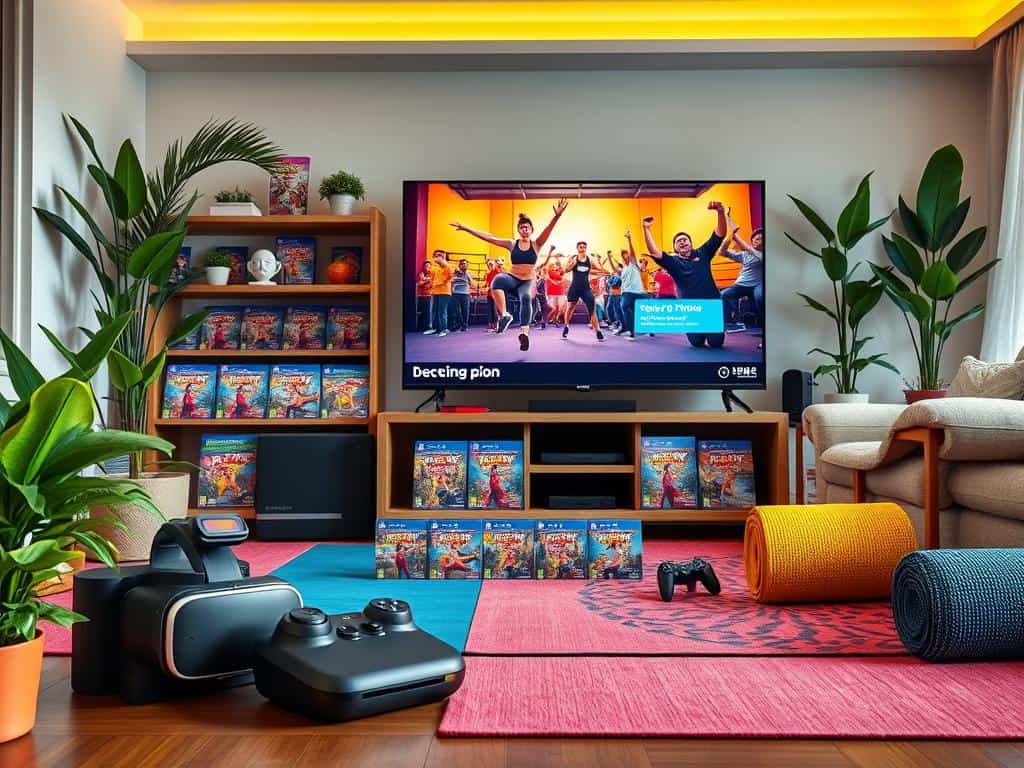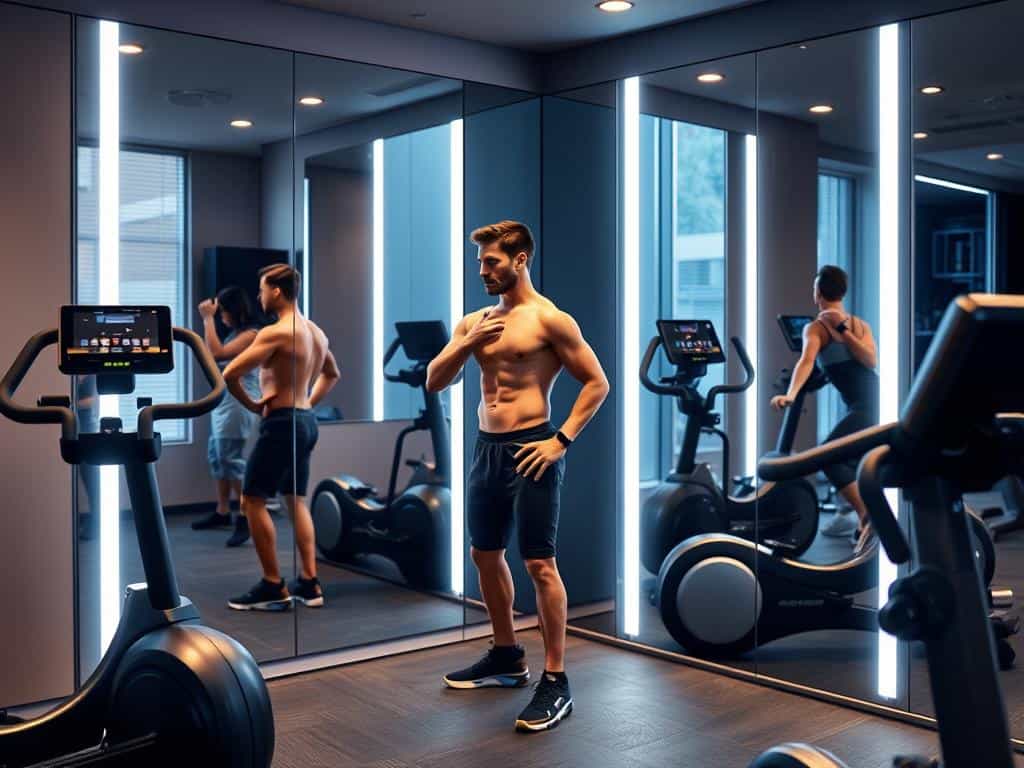Did you know the value of the global smart clothing market hit around $4.5 billion in 2022? It’s expected to jump to $20.6 billion by 2030, growing at a rapid rate of 21.1% CAGR. This growth highlights a rising interest in cutting-edge workout gear that boosts both athletic performance and health. Exploring smart clothing, or e-textiles, reveals their game-changing role in fitness tech.
Companies like Wearable X and Under Armour are pioneering this trend. Wearable X brings us the smart yoga pants Nadi X, and Under Armour is using Celliant Technology. These innovations aren’t just about style; they equip wearers with the ability to check their fitness and health stats on the fly. Thanks to sensors woven into these garments, tracking essential health metrics during a workout is easier and more interactive.
Key Takeaways
- The smart clothing market is expected to grow from $4.5 billion in 2022 to $20.6 billion by 2030.
- Wearable X’s Nadi X yoga pants exemplify how smart clothing enhances workout experiences.
- Under Armour utilizes Celliant Technology to boost athletic performance and recovery.
- Smart clothing enables continuous monitoring, preventing injuries and optimizing workout efficiency.
- Innovative solutions in smart clothing cater to fitness enthusiasts and medical professionals alike.
The Rise of Smart Clothing in the Fitness Industry
Smart clothing is changing the fitness world by mixing style with tech. These clothes not only look great but also improve your workout and keep an eye on health stats. The trend toward tech-in clothes is growing fast. This opens up new possibilities for tech wearables that appeal to both serious athletes and everyday users.
Current Market Trends and Projections
The global market for sporty fashion is booming and expects big growth. For instance, the Indian market is projected to hit INR 54,000 crore by 2024, growing at an 11% CAGR. New types of clothes can now track your steps, calories, and more. These items connect to apps via Bluetooth for monitoring. Plus, clothes that control sweat and body temperature are getting popular. They mix style with usefulness, fitting what buyers want.
Key Players and Innovations
Top names in wearables are doing great things with smart clothes. Brands like Hexoskin, Sensoria, and Athos are leading the way. They make clothes that check your heart rate and blood pressure. Each piece of clothing has a special tech role but is still comfy to wear. For example, some shirts gather health data, while smart socks track how active you are. The blend of fashion and fitness is getting more advanced. We expect to see clothes that can connect better, make power, and even use AI to offer smarter features.

How Wearable Tech is Integrated into Athletic Clothing
Wearable technology in athletic clothing has changed how athletes train and recover. Smart fabrics have sensors that track heart rate and muscle work. They also have tech to measure movement and effort. This helps athletes keep their bodies in the best condition during exercise.
Functional Features of Smart Fabrics
Smart fabrics manage moisture, control temperature, and track your performance keenly. Brands like Under Armour use tech to reflect your body’s heat to help you recover faster. They also have sensors to see how your movements affect your body. This helps athletes train smarter, avoiding injuries.
The Impact on Performance and Recovery
The mix of movement analysis and wearable tech boosts athletic results. Coaches watch training stats and talk better with players through these devices. Tools like GoRout improve game plans with quick coach-to-player messages. With instant feedback and personalized data, athletes avoid injuries and train harder. This enhances their performance and how quickly they recover.



